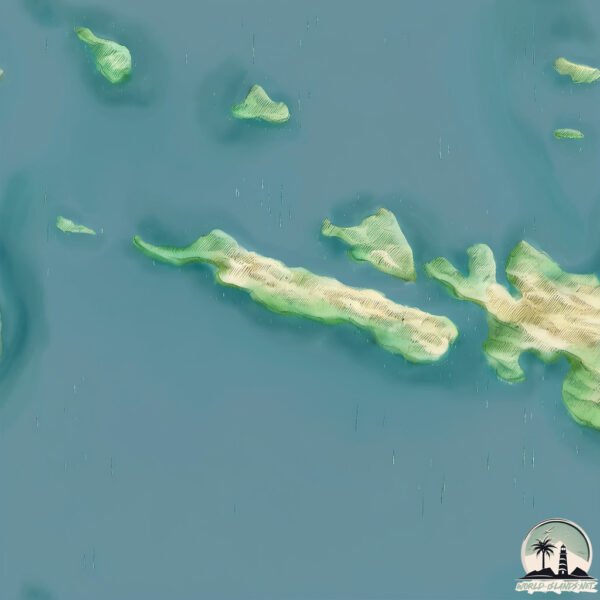Welcome to Sir Richard , a Tropical island in the Indian Ocean, part of the majestic Indian Ocean. This guide offers a comprehensive overview of what makes Sir Richard unique – from its geography and climate to its population, infrastructure, and beyond. Dive into the details:
Geography and size of Sir Richard
Size: 1.202 km²Coastline: 7 kmOcean: Indian OceanSea: Indian OceanContinent: Oceania
Sir Richard is a Small Island spanning 1.2 km² with a coastline of 7 km.
Archipel: –
Tectonic Plate: Australia – A major tectonic plate covering Australia, New Zealand, and parts of the Indian and Pacific Oceans, known for its relative stability and occasional seismic activity.
The geographic heart of the island is pinpointed at these coordinates:
Climate and weather of Sir Richard
Climate Zone: TropicalClimate Details: Tropical Savanna, WetTemperature: Hot
Climate Characteristics: Defined by distinct wet and dry seasons with high temperatures year-round. Pronounced rainfall occurs during the wet season, while the dry season is marked by drought.
Topography and nature of Sir Richard
Timezone: UTC+08:00Timezone places: Australia/PerthMax. Elevation: 26 m Mean Elevation: 19 mVegetation: Herbaceous CoverTree Coverage: 87%
The mean elevation is 19 m. The highest elevation on the island reaches approximately 26 meters above sea level. The island is characterized by Plains: Flat, low-lying lands characterized by a maximum elevation of up to 200 meters. On islands, plains are typically coastal lowlands or central flat areas.
Dominating Vegetation: Herbaceous Cover
Vegetation: 3 vegetation zones – Moderately Diverse Island
Infrastructure and Travelling to Sir Richard
Does the island have a public airport? no .
Does the island have a major port? no .
The mean population of Sir Richard is 0 per km². Sir Richard is Uninhabited. The island belongs to Australia .
Continuing your journey, Hidden is the next notable island, situated merely km away.
Virgin Life - a day on Necker Island
People often ask how I spend my time on Necker Island - here's a film that gives you a glimpse into a day on Necker. From playing ...
Virgin Life - a day on Necker Island
People often ask how I spend my time on Necker Island - here's a film ...
People often ask how I spend my time on Necker Island - here's a film that gives you a glimpse into a day on Necker. From playing ...
What's Really On Virgin's Private Island?
Richard Branson made his fortune early in his career with the Beatles, ...
Richard Branson made his fortune early in his career with the Beatles, and later the major corporation known as Virgin! He's worth ...
Sir Richard Branson’s Private Island in the Caribbean
From white beaches to blue waters, Sir Richard Branson's private ...
From white beaches to blue waters, Sir Richard Branson's private island is a travel destination worth seeing.
Australia is classified as Developed region: nonG7: Developed economies outside of the Group of Seven, characterized by high income and advanced economic structures. The level of income is High income: OECD.
News – Latest Updates and Headlines from Sir Richard
Stay informed with the most recent news and important headlines from Sir Richard. Here’s a roundup of the latest developments.
Loading...
Please note: The data used here has been primarily extracted from satellite readings. Deviations from exact values may occur, particularly regarding the height of elevations and population density. Land area and coastline measurements refer to average values at mean high tide.

